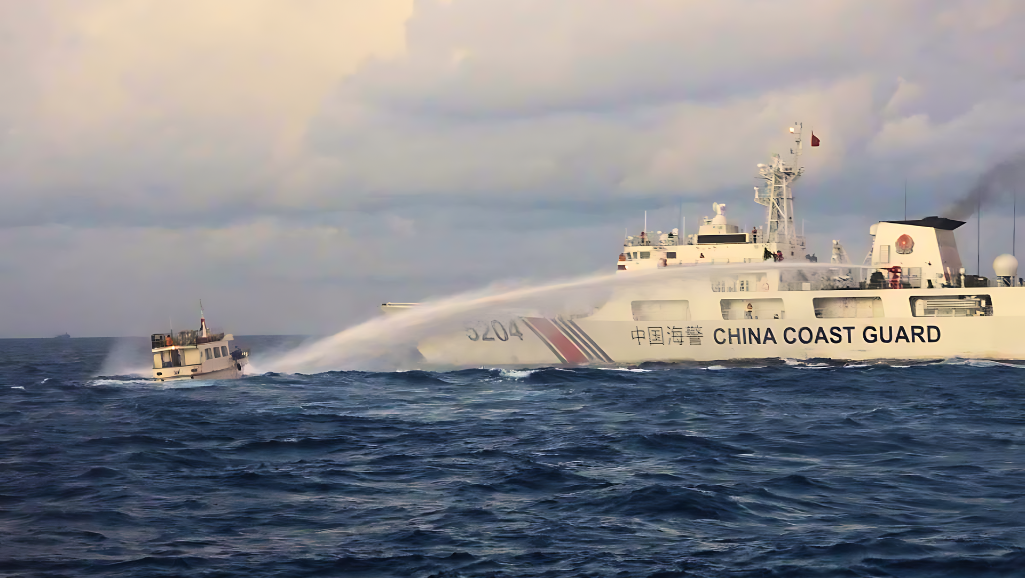

The US Army has deployed, for the first time, its latest intermediate ballistic missile launcher in the Philippines, a move that could draw a strong response from China.
Recently developed by Lockheed Martin, the deadly Mk70 Mod 1 can launch a Tomahawk or Standard SM6 missiles up to 1,600 kilometers, a real deterrent in the increasingly volatile Indo-Pacific region.
But can it prevent an attack, or can it be a magnet for an attack?
In its first overseas deployment, the US Army shipped its Mk 70 Mod 1 Typhoon missile launcher to northern Luzon and was tested during the two-week ground forces’ exercise “Salacnib.”
Troops from the Philippine Army’s 5th and 7th Infantry Divisions in northern Luzon were among the first to witness the Typhoon’s lethality in simulated drills.
Salacnib, which started on April 8 and lasted for two weeks, will be followed by the joint and combined “Balikatan” exercises, which will open on Monday, April 22.
“Salacnib” is part of the broader US Army Pacific (USARPAC) “Pacific Pathways” drills, rotating in several countries in the region.
Installed on a 40-footer truck, the missile launcher is capable of firing land-based Tomahawk cruise missiles and Standard SM 6 missiles, standard US Navy weapons.
The US Army said the lethal Typhoon missile launcher could be used as an anti-air, anti-surface, and anti-ballistic missile defense. It could also be an offensive weapon, reaching targets almost 2,000 kilometers away.
The launcher was originally based at the Joint Base Lewis-McChord in Washington State under the US Armed Forces 1st Multi-Domain Task Force.
In an interview with Japanese reporters at the US embassy in Tokyo, the USARPAC chief, General Charles Flynn, said they would start deploying the Mk 70 Mod 1 in the Indo-Pacific region by the end of the year.
General Flynn declined to provide more details about the Mk 70 Mod 1 Typhoon deployment, but there were only a few possible areas where the missile launchers could be sent.
Guam would no longer be possible due to Mk 70 Mod 1’s limited range.
However, Japan, the Philippines, and South Korea would likely be the candidates to host the medium-range ballistic missile launcher.
Washington was forced to develop, test, and deploy intermediate ballistic missiles after Donald Trump walked away from the Intermediate Nuclear Force (INF) treaty, signed by US President Ronald Reagan and Soviet leader Mikhail Gorbachev in the late 1980s, because China was rapidly stockpiling ballistic missiles.
China was not a signatory to the INF. China’s actions fueled an arms race as the US, Russia, and China began developing more lethal, more accurate, and faster conventional and nuclear ballistic missiles.
The increasing presence of US ground forces in northern Luzon based on the new US military strategy, “Distributed Force Posture,” would be another clue to the possible deployment of the Mk70 Mod 1 Typhoon missile launcher in the Philippines.
Admiral John Aquilino, the outgoing Indo-Pacific commander in chief, has announced before the US Congress the administration’s plan to send boots on the ground in the northern Philippines as tensions rise in the region.
As long as the intermediate-range ballistic missiles are not nuclear-tipped, the Philippines could probably allow the missile launchers’ deployment in the north and the west of the country.
The weapons systems could have a liability. President Ferdinand Marcos Jr might not allow the deployment of a conventional offensive missile, like a land-based Tomahawk missile, which can hit targets in southern China, Hainan, and the seven artificial islands.
China would expectedly protest the deployment of such weapon systems in the region, whether in Japan or the Philippines.
Beijing is expected to respond strongly to the deployment as the Mk 70 Mod 1 Typhoon missile launcher would seriously threaten its interests.
For the Philippines, it could enhance its minimum credible defense posture and increase regional deterrence.
In allowing the Mk70 Mod 1 Typhoon deployment to the country, President Marcos should carefully balance US deterrence and China’s increased coercive actions.
Of course, the situation is far from the 1962 Cuban missile crisis when Fidel Castro allowed the former Soviets to deploy ballistic missiles on the island south of the US mainland.
However, the Philippines cannot second guess how Beijing would respond to the Typhoon deployment.
Could it be an excuse for China to launch a preemptive strike on areas where the Mk70 Mod 1 Typhoon missile launchers are deployed?
Beijing would not risk an escalation. China would think twice before launching an attack. The presence of Mk70 Mod 1 Typhoon missile launchers is not enough excuse to attack another country.
China would become a pariah state if it did that.
Perhaps the Philippines would anticipate China’s increased bullying in the West Philippine Sea.
Only time and circumstances can tell if the Mk70 Mod 1 could in reality be a deterrent or a magnet for an attack on the Philippines.

Survey: More Filipinos want to align with US than China in sea dispute
More Filipinos would take the American position than side with China over the West Philippine Sea dispute, a recent survey has found.

Divisive American Indo-Pacific strategy
In January 2021, Washington crafted a strategy to promote an open and free Indo-Pacific region to deter its main competitor, Beijing, from dominating global political and economic influence.

Paano nagpapakalat ng propaganda ang Tsina sa Tiktok
Bagama’t tinanggal na ang page na ito sa naturang video streaming platform, napag-alaman ng ating himpilan na pinapatakbo ito ng China Daily, isang malaking media organization sa Tsina na pagmamay-ari ng kanilang pamahalaan.
